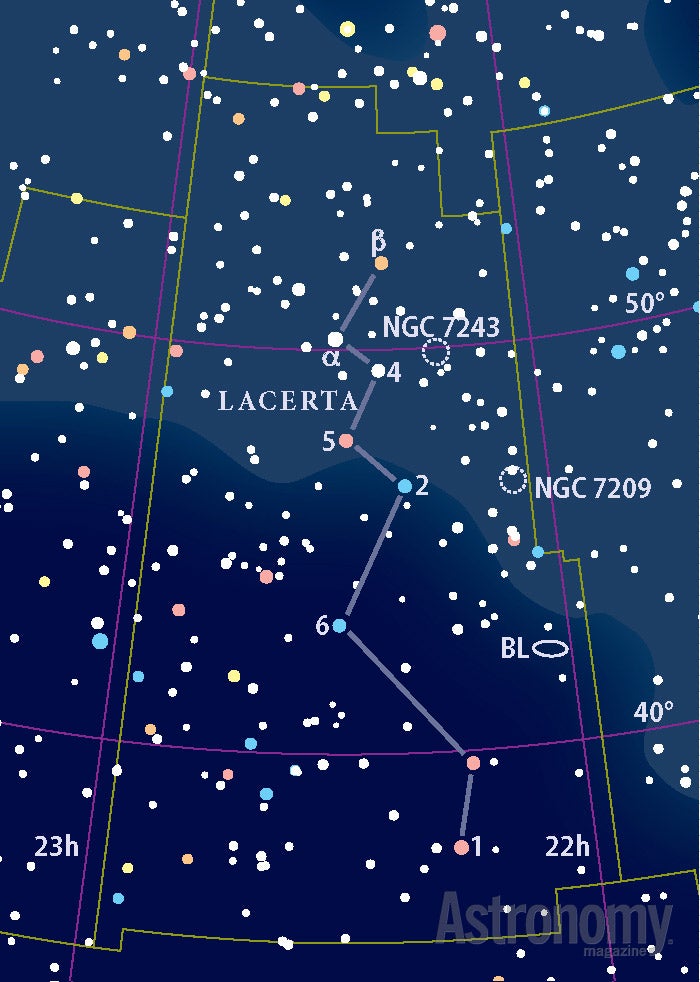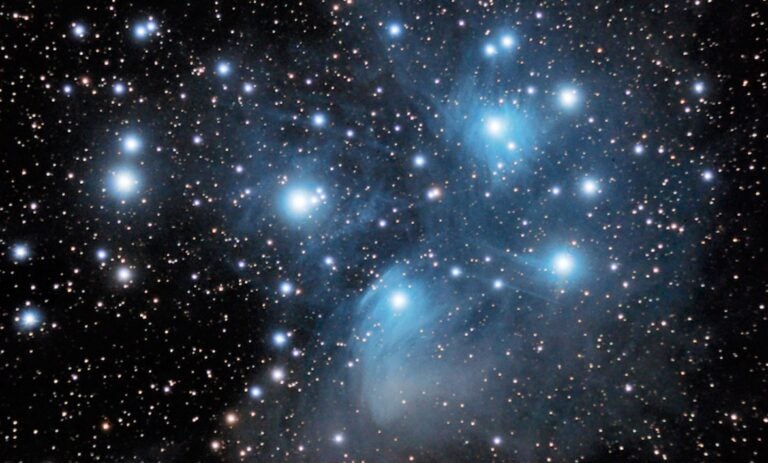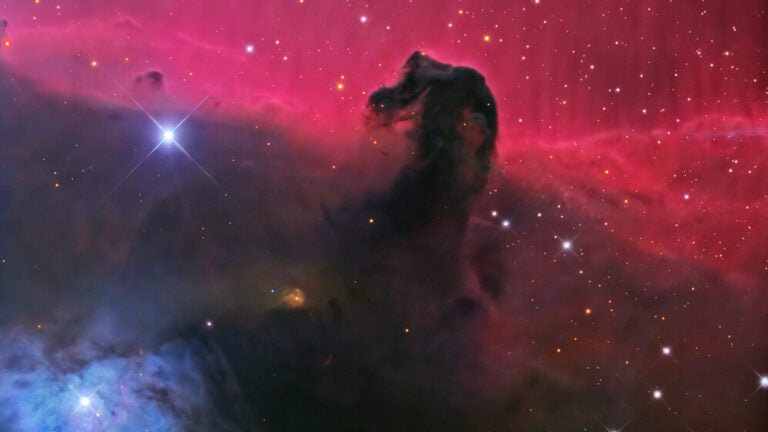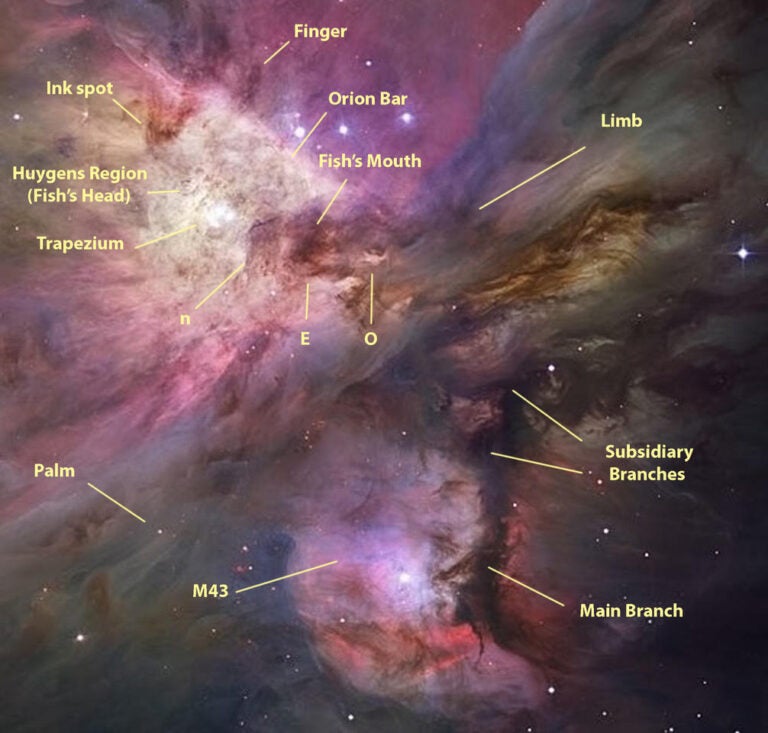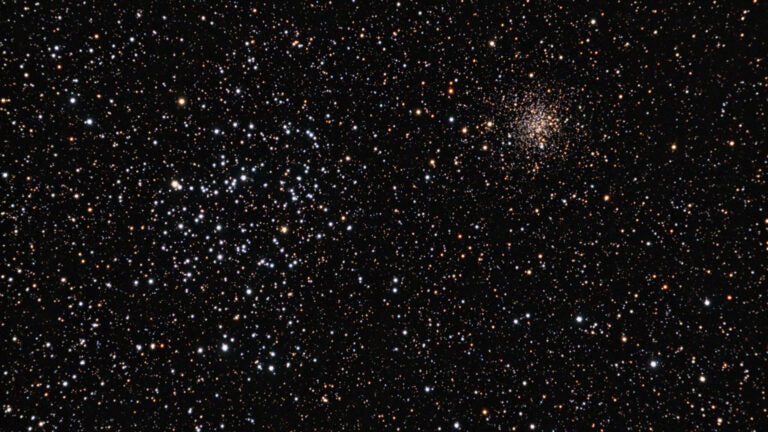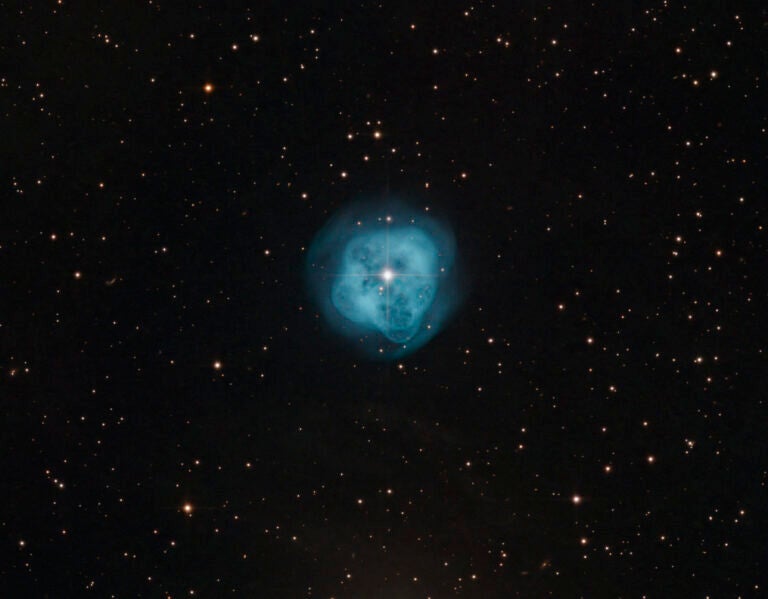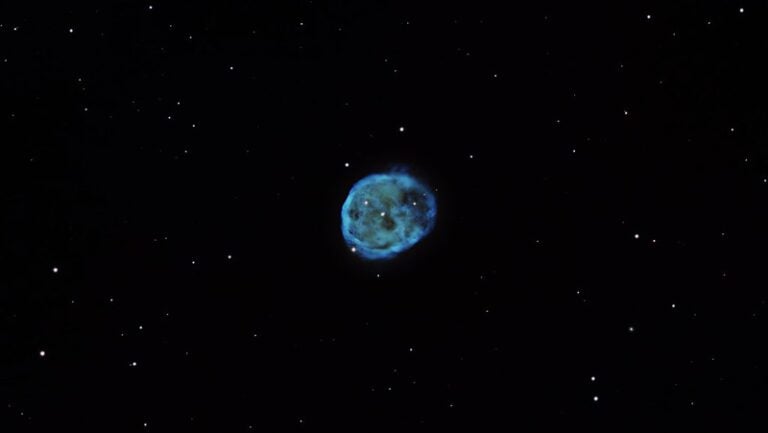Each week, Astronomy magazine Senior Editor Michael E. Bakich, a master at explaining how to observe, posts a podcast about three or more objects or events you can see in the sky.
Targets for September 24–October 1, 2015
Small telescope: Open cluster NGC 7209 in Lacerta
Small telescope: The Cocoon Nebula (IC 5146) in Cygnus
Large telescope: The Spare Tire Nebula (IC 5148) in Grus
Targets for September 24–October 1, 2015
Small telescope: Open cluster NGC 7209 in Lacerta
Small telescope: The Cocoon Nebula (IC 5146) in Cygnus
Large telescope: The Spare Tire Nebula (IC 5148) in Grus
Colorful cluster
This week’s first target is open cluster NGC 7209 in Lacerta. Through a small telescope, you’ll find this object hidden in a rich star field 5.8° southwest of magnitude 3.8 Alpha (α) Lacertae. Don’t confuse it with another open cluster, NGC 7243, which lies 2.6° west of the star.
NGC 7209 is nice and bright: magnitude 7.7, and it measures 25′ across, which means it covers an area 65 percent as large as the Full Moon. A 4-inch telescope at 100x shows 50 stars nicely strewn around the field of view.
The half-dozen brightest stars within NGC 7209 fall in the 9th-magnitude range. They appear to sit in the foreground and contrast nicely with a layer of fainter background stars. Those stars, in turn, lie atop a field of innumerable faint points of light.
About half the stars in this open cluster — including four of the bright ones — shine with a yellowish-white light. The rest are blue, making for a striking overall color contrast throughout this cluster.
Hibernating in Cygnus
Some deep-sky objects stand on their own. Others pair up with notable companions. Occasionally, the surrounding star field helps elevate a rather ordinary object’s status. Such is the case with our second target, the Cocoon Nebula.
This emission nebula lies in Cygnus the Swan. It also carries the catalog designations IC 5146 and Caldwell 19. It glows at magnitude 7.2 and measures 12′ across.
Unfortunately, it doesn’t lie near any bright star. You’ll find it 12.5° east-northeast of brilliant Deneb (Alpha Cygni). Or, if you remember where M39 is, the Cocoon Nebula sits 3.8° — about half a binocular field of view — east-southeast of that cluster.
The Cocoon Nebula overlaps the eastern edge of Barnard 168 (B168), one of the northern sky’s finest dark nebulae. From a dark site, sharp-eyed observers can pick up this murky lane without optical aid, but spotting it isn’t easy. A better approach is to use binoculars or a telescope with an eyepiece that provides more than a 1 field of view.
British astronomer Thomas Henry Espinell Compton Espin discovered the Cocoon Nebula August 13, 1899. German astronomer Maximilian Franz Joseph Cornelius Wolf was the first to photograph it, in 1900. Wolf’s description said, “It is placed centrally in a very fine lacuna, void of faint stars, which surrounds the luminous cloud like a trench. The most striking feature with regard to this object is that the star-void halo encircling the nebula forms the end of a long channel … to a length of more than two degrees.”
You can spot the Cocoon Nebula through a 4-inch telescope as a circular blur. Its light equals that of a 7th-magnitude star, but the nebula’s surface brightness is low. Making matters worse, two magnitude 9.7 stars lie entangled within the glow. For best results, use a nebula filter. That accessory will suppress the starlight while still passing most of the emission nebula’s glow.
Keep on rolling
This week’s final target is the Spare Tire Nebula in Grus. Also known as IC 5148, this planetary nebula lies low in the sky for many Northern Hemisphere observers.
To find it, point your large telescope 1.3 west of magnitude 4.5 Lambda (λ) Gruis. IC 5148 is a gorgeous planetary nebula that displays a thick ring, or annulus, and glows softly at magnitude 11.0. But it’s not tiny — its diameter measures 120″. The dark central zone seems small, but it spans one-quarter of this object’s diameter. The central star glows dimly at magnitude 15.5, but it’s not hard to spot through a 14-inch telescope. Whatever scope you end up using, be sure to crank up the magnification. A magnitude 10.4 star, GSC 7986:150, lies only 2′ south-southwest of center.
According to American amateur astronomer Kent Wallace, the first written mention of this object’s wonderful common name appeared in an early issue of Southern Astronomy magazine. Unfortunately, there was no mention of who coined the name.
This week’s first target is open cluster NGC 7209 in Lacerta. Through a small telescope, you’ll find this object hidden in a rich star field 5.8° southwest of magnitude 3.8 Alpha (α) Lacertae. Don’t confuse it with another open cluster, NGC 7243, which lies 2.6° west of the star.
NGC 7209 is nice and bright: magnitude 7.7, and it measures 25′ across, which means it covers an area 65 percent as large as the Full Moon. A 4-inch telescope at 100x shows 50 stars nicely strewn around the field of view.
The half-dozen brightest stars within NGC 7209 fall in the 9th-magnitude range. They appear to sit in the foreground and contrast nicely with a layer of fainter background stars. Those stars, in turn, lie atop a field of innumerable faint points of light.
About half the stars in this open cluster — including four of the bright ones — shine with a yellowish-white light. The rest are blue, making for a striking overall color contrast throughout this cluster.
Hibernating in Cygnus
Some deep-sky objects stand on their own. Others pair up with notable companions. Occasionally, the surrounding star field helps elevate a rather ordinary object’s status. Such is the case with our second target, the Cocoon Nebula.
This emission nebula lies in Cygnus the Swan. It also carries the catalog designations IC 5146 and Caldwell 19. It glows at magnitude 7.2 and measures 12′ across.
Unfortunately, it doesn’t lie near any bright star. You’ll find it 12.5° east-northeast of brilliant Deneb (Alpha Cygni). Or, if you remember where M39 is, the Cocoon Nebula sits 3.8° — about half a binocular field of view — east-southeast of that cluster.
The Cocoon Nebula overlaps the eastern edge of Barnard 168 (B168), one of the northern sky’s finest dark nebulae. From a dark site, sharp-eyed observers can pick up this murky lane without optical aid, but spotting it isn’t easy. A better approach is to use binoculars or a telescope with an eyepiece that provides more than a 1 field of view.
British astronomer Thomas Henry Espinell Compton Espin discovered the Cocoon Nebula August 13, 1899. German astronomer Maximilian Franz Joseph Cornelius Wolf was the first to photograph it, in 1900. Wolf’s description said, “It is placed centrally in a very fine lacuna, void of faint stars, which surrounds the luminous cloud like a trench. The most striking feature with regard to this object is that the star-void halo encircling the nebula forms the end of a long channel … to a length of more than two degrees.”
You can spot the Cocoon Nebula through a 4-inch telescope as a circular blur. Its light equals that of a 7th-magnitude star, but the nebula’s surface brightness is low. Making matters worse, two magnitude 9.7 stars lie entangled within the glow. For best results, use a nebula filter. That accessory will suppress the starlight while still passing most of the emission nebula’s glow.
Keep on rolling
This week’s final target is the Spare Tire Nebula in Grus. Also known as IC 5148, this planetary nebula lies low in the sky for many Northern Hemisphere observers.
To find it, point your large telescope 1.3 west of magnitude 4.5 Lambda (λ) Gruis. IC 5148 is a gorgeous planetary nebula that displays a thick ring, or annulus, and glows softly at magnitude 11.0. But it’s not tiny — its diameter measures 120″. The dark central zone seems small, but it spans one-quarter of this object’s diameter. The central star glows dimly at magnitude 15.5, but it’s not hard to spot through a 14-inch telescope. Whatever scope you end up using, be sure to crank up the magnification. A magnitude 10.4 star, GSC 7986:150, lies only 2′ south-southwest of center.
According to American amateur astronomer Kent Wallace, the first written mention of this object’s wonderful common name appeared in an early issue of Southern Astronomy magazine. Unfortunately, there was no mention of who coined the name.
Expand your observing at Astronomy.com
StarDome
Check out Astronomy.com’s interactive StarDome to see an accurate map of your sky. This tool will help you locate this week’s targets.
The Sky this Week
Get a daily digest of celestial events coming soon to a sky near you.
Observing Talk
After you listen to the podcast and try to find the objects, be sure to share your observing experience with us by leaving a comment at the blog or in the Reader Forums.

